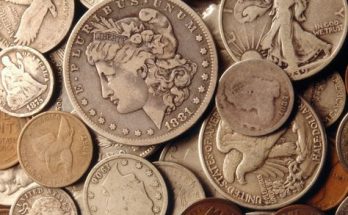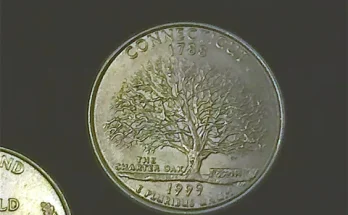Are you interested in collecting German coins? The German currency, the Deutsche Mark, has a long, interesting, and sometimes violet history, making the coins worth collecting.
With such a lengthy history and many of them to compare, how do you determine the most valuable German coin?
In this guide, we have identified the top German coins worth money. In addition to learning about the history of the Deutsche Mark, you will also discover some of the country’s most expensive coins.
As a collector, knowing which coins to pay attention to can pay off in a big way. So read on to discover which valuable German coin is worth your time and investment.
Let’s get started!
A Brief History of German Coins
German coin minting technology dates back to the 1500s, when water-wheel-driven rolling machines were used to produce crude coins.
The Gulden was among the earliest coins minted in Humburg, which became present-day Germany. As the years passed and technology evolved, the German Mint could strike gold and silver coins for circulation and commemorative purposes.
Before the establishment of the greater German Empire into one country, the different states each had its currency, with the Humburg mark, first struck in 1619, being the oldest and most stable.
The Hamburg mark, which lasted until 1873, was also the first currency in German to be divided into so-called pfennigs, which are equal to pennies. The word ”mark” continued to be used as part of Germany’s currency lingo until the country adopted the euro much later.
As a result of using different currencies, the various states were constantly at loggerheads over exchange rates. But, the introduction of the German gold mark ended the trade conflicts and allowed German currency to be available in 100 pfennigs which would be struck on silver, gold and metal.
In 1871, Otto Von Bismarck established the German Empire by uniting Bavaria, Saxony, Prussia, and Wurttemberg. Unification meant that the Empire could now use a single currency.
By the 1940s, the mints were already striking the Silver 1 Mark, Copper-Nickel 5 and 10 pfennig, Silver ½ Mark, and the Copper 1 and 2 pfennig. During Adolf Hitler and the Nazi’s political rise, all coins minted featured the saying, Gemeinnutz geht vor Eigennutz, meaning the community is more important than the individual.
For many years, the German Mint produced pfennig and Deutsche Mark. With the European Central Bank headquartered in Frankfurt, the Mint solely produces euros now.
Let’s find out what is the most valuable German coin.
Valuable German Coin Worth Money
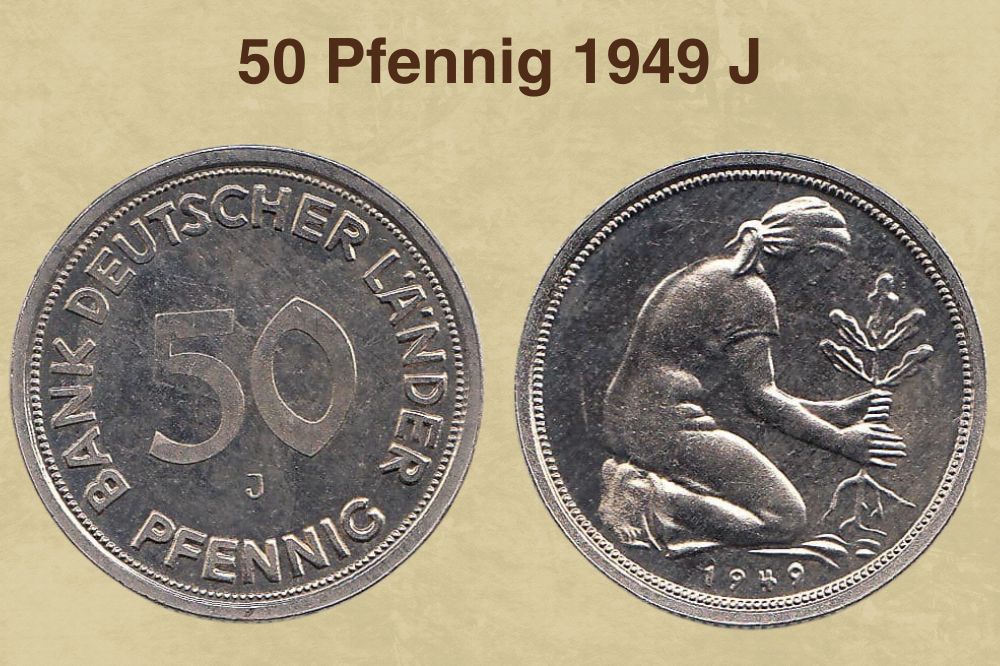
The 50 Pfennig minted in 1949 at the Hamburg Mint has an interesting history. This coin series was struck from 1949 to 2001, but the obverse design changed severally while the reverse remained the same for the entire duration the coin was minted.
The reverse of the 50 Pfennig features a young lady planting a tree. This applies to all dates from 1949 to 2001, but the initial 1949 coins’ lettering differs from the coins struck between 1950 and 2001.
In particular, in 1949 Pfennigs, the inscription reads BANK DEUTSCHER LANDER, but after this date, the inscription changes to BUNDESREPUBLIK DEUTSCHLAND.
If you are still unsure about the price of your coins, you can appraise and sell your coins for free through our verified platform.
The 50 Pfennig 1949 J with the inscription BUNDESREPUBLIK DEUTSCHLAND is generally more valuable in average circulated condition and mint state. Circulated examples cost up to $300, while uncirculated pieces can fetch as much as $500.
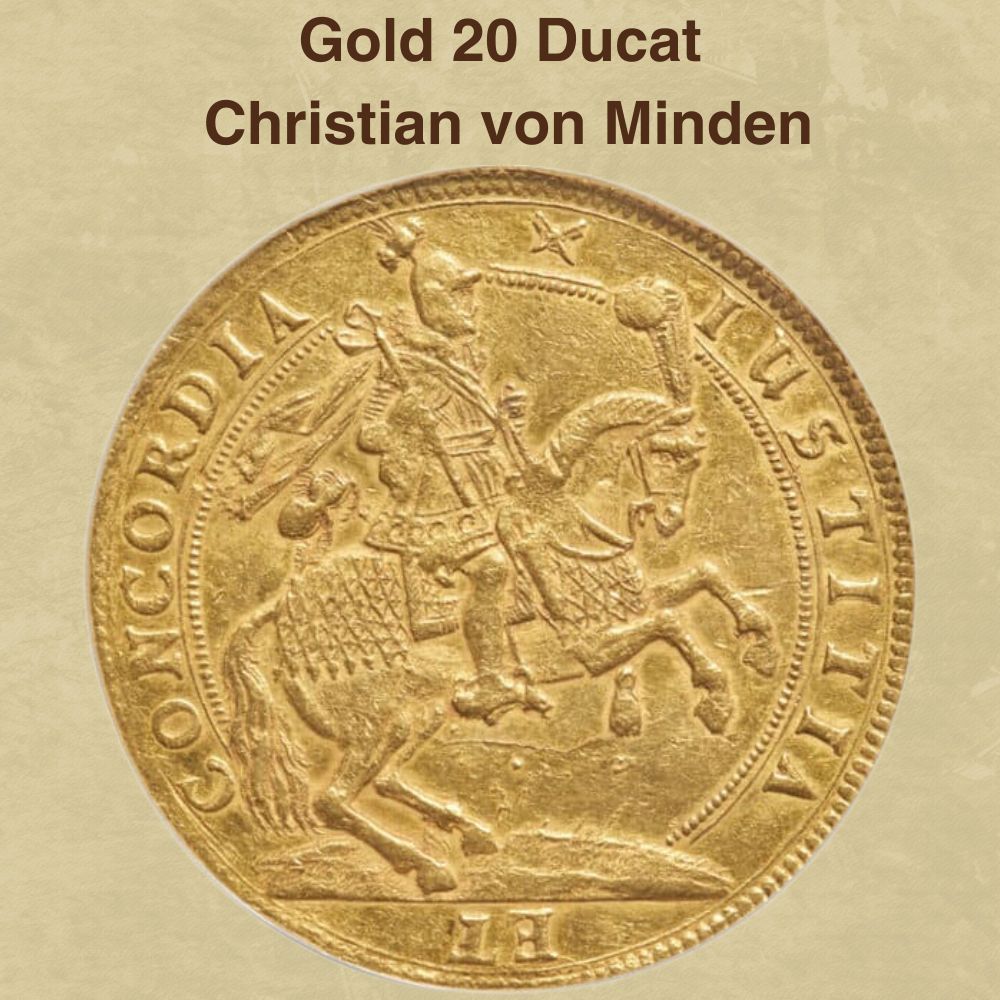
No year or date is on the Christian von Minden gold ducat from Brunswick-Lüneburg-Celle. But it is believed that the coin may have been created between 1611 and 1633 when Christian von Minden reigned over Lüneburg as the locality’s bishop.
The gold 20 ducat features a portrait of Christian von Minden on a horse on the obverse. The reverse features Lüneburg’s coat of arms. The motto JUSTITIA AND CONCORDIA appear on the obverse too.
The last example was sold in a 2021 auction for an eye-watering $336,000.
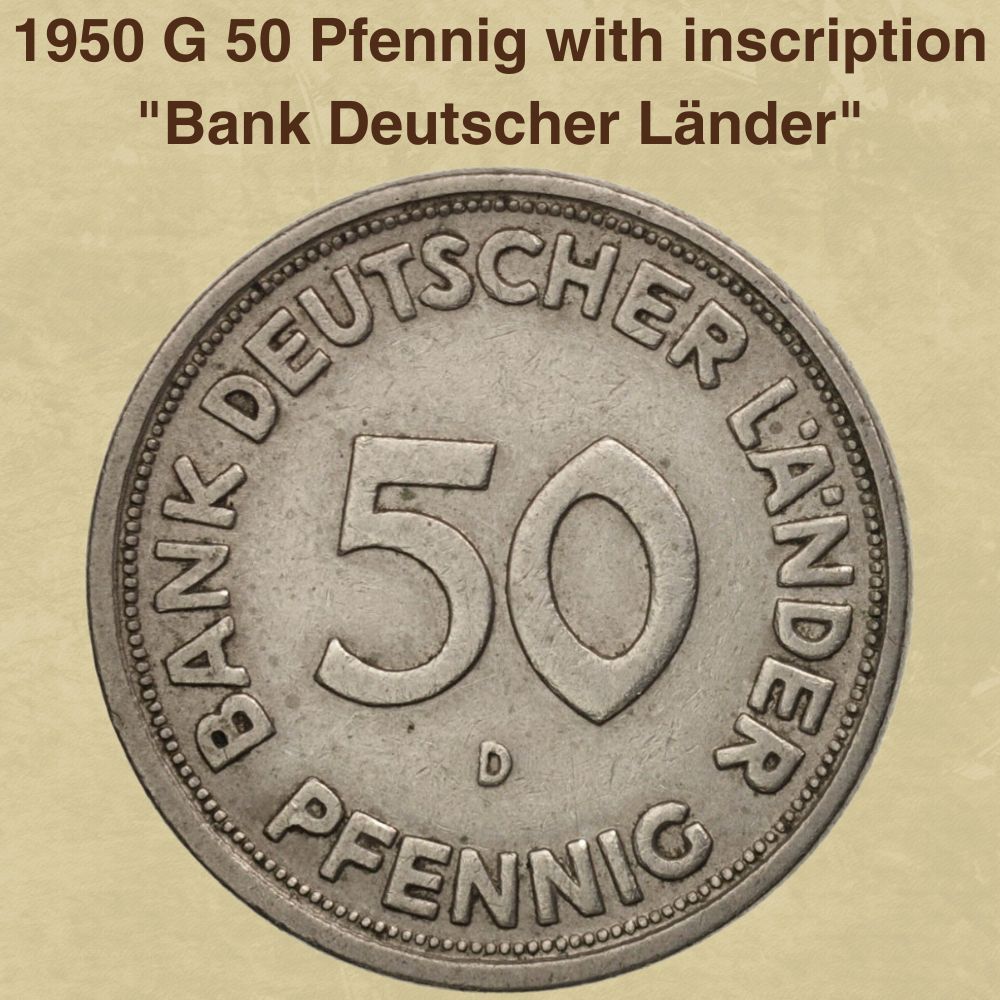
The 50 Pfennig was struck from 1949 to 2001. While the coin’s reverse remained the same throughout the production run, the inscription on the obverse changed between 1949 and 1950.
The coins minted in 1949 feature the inscription BANK DEUTSCHER LANDER but starting from 1950, this changed to BUNDESREPUBLIK DEUTSCHLAND. Only some 1950-50 Pfennigs were struck with the new inscriptions, with some carrying over the older inscription for 1949.
These error coins are fascinating and rare, making them a fixture among collectors. Examples in mint state are few and apart because only a few of these pieces were struck anyway.
Values range between $300 and $800 depending on whether the coin is circulated or uncirculated.


